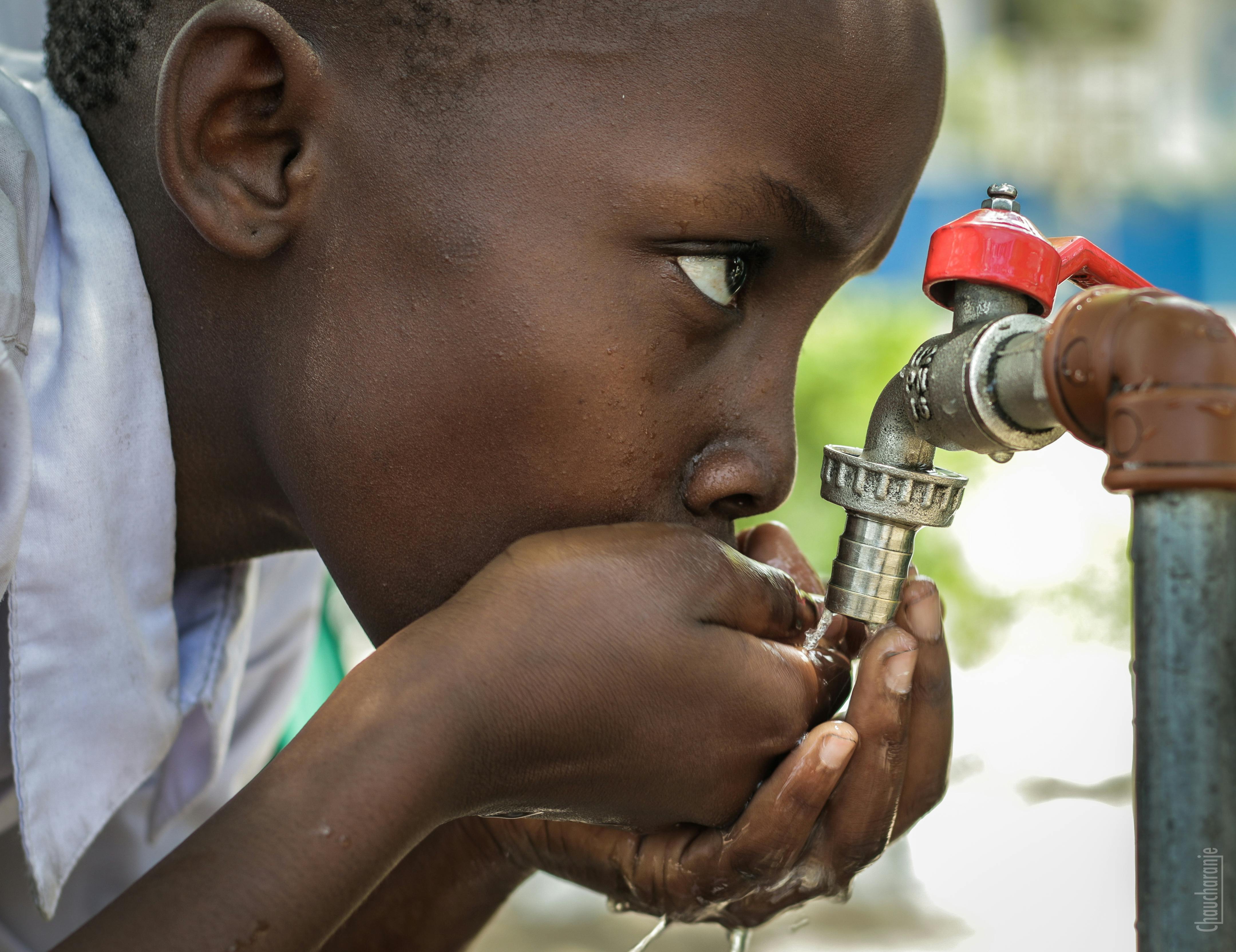Distilled water and drinking water are two types of water that have important differences. Distilled water is created by a process of distillation, which involves boiling the water and then condensing the steam back into a liquid. This removes many of the minerals, salts, and other contaminants from the liquid. Drinking water is regulated by the government to ensure it meets certain standards for safety and health. It often contains trace amounts of minerals and other elements that can be beneficial to health.Distilled water is water that has been boiled and condensed back into liquid form. The boiling process removes impurities and minerals from the water, which makes it pure. Distilled water is commonly used for drinking, medical procedures, steam irons, vehicle batteries, humidifiers and more.
What Is Drinking Water?
Drinking water, also known as potable water or improved drinking water, is water that is safe to drink or use for food preparation. It is important to note that not all water is safe to drink. Contaminated water can contain bacteria, viruses, and parasites that can cause illnesses like diarrhea, cholera, dysentery, typhoid, and polio.
The most common sources of drinking water are underground aquifers, rivers, lakes, and reservoirs. In some areas of the world, desalination plants are used to convert saltwater into drinking water. In other areas of the world surface water sources are treated with chlorine or ultraviolet light in order to make them safe for human consumption.
It is also important to note that drinking water may contain chemicals such as chlorine or fluoride that are added by local governments to improve the safety of their public drinking supplies. These chemicals can be beneficial when added in small amounts but can be harmful if consumed in large quantities over long periods of time.
In order to ensure that drinking water is safe for
The Benefits of Distilled Water
Distilled water has a number of beneficial properties that make it an ideal choice for drinking, cleaning, and cooking. Firstly, distilled water is free from minerals and contaminants that can be found in regular tap water. This means that it is safe for consumption, as it does not contain any impurities or pollutants. Furthermore, using distilled water for cleaning can help to reduce the risk of bacterial growth that can be caused by unfiltered tap water. Finally, because distilled water is free from minerals and contaminants, it provides a more consistent taste when used in cooking.
In addition to its safety benefits, using distilled water also provides numerous health advantages. For example, many people turn to distilled water as a way to improve their skin health and reduce the symptoms of conditions such as eczema or psoriasis. Similarly, some studies suggest that drinking distilled water can help to reduce the risk of kidney stones and other urinary tract infections. Additionally, due to its lack of minerals and contaminants, many people have found that consuming distilled water helps them to stay hydrated for longer periods of time.
Finally, there are environmental
Risks of Drinking Water
Drinking water is essential for health and survival, but it can also carry risks. Contaminated water can cause serious illnesses and even death. People who do not have access to clean water are particularly at risk of water-borne illnesses, such as cholera, typhoid fever, and dysentery. In some countries, people may be exposed to high levels of lead or other toxins in their drinking water. These contaminants can cause serious health problems, including kidney damage and an increased risk of cancer.
Other risks associated with drinking water include the potential for ingestion of microorganisms that cause gastrointestinal infections. Drinking untreated surface water may also expose individuals to parasites such as Cryptosporidium or Giardia lamblia. These organisms can cause severe diarrhea and stomach cramps.
In addition to the health risks posed by contaminated drinking water, there is also the potential for toxic chemicals or heavy metals in the water supply. Exposure to these substances can lead to long-term health problems such as reproductive disorders and neurological disorders. For example, exposure to arsenic in drinking water has been linked to an increased risk of skin
Differences in Chemical Composition
The chemical composition of different materials can vary greatly, depending on their origin and the conditions under which they were formed. For example, some rocks are composed primarily of minerals such as quartz and feldspar, while others may contain a variety of other chemical compounds such as metals or carbonates. In addition, the amount of each mineral present in a rock sample can vary widely due to its origin and the environment in which it formed. As a result, the physical properties of any given material can be quite different from one another.
When comparing two materials with different chemical compositions, it is important to consider both their physical and chemical properties. For instance, certain elements or compounds may react differently when exposed to heat or pressure than others. As such, the way that two materials interact with one another can be an important factor in determining their overall performance or quality. Additionally, differences in chemical composition can also affect certain physical characteristics such as color or hardness.
It is also important to note that the same material can have different properties depending on how it is processed or treated.

Differences in Mineral Content
Minerals are essential for the optimal functioning of the human body. Different types of foods contain different types and levels of minerals, so it is important to understand the differences between them. Minerals can be found in a variety of foods, such as fruits, vegetables, grains, and meats. While some foods contain more minerals than others, all types of food provide essential nutrients that are necessary for proper health and development.
The most prominent minerals found in food include calcium, phosphorus, magnesium, potassium, zinc, iron, copper and sodium. The amounts vary depending on the type of food; for example, dairy products typically provide larger amounts of calcium than other sources. Additionally, processed foods often contain less minerals due to the manufacturing process. Fresh produce generally contains higher levels of minerals than processed varieties.
The body requires a certain amount of each mineral in order to maintain homeostasis and function properly. Minerals are necessary for various bodily processes such as bone growth and maintenance, energy production and metabolism regulation. A balanced diet should include a variety of foods that provide a range of different minerals to
Taste and Odor Differences
The sense of taste and smell are both important components to the overall experience of food and drink. Taste is the sensation that is detected by the tongue, while odor is detected by the nose. Although both senses are closely related, there are some differences between them.
Taste is a chemical sense that is made up of four distinct sensations: sweet, salty, sour, and bitter. These four sensations are detected by special taste receptors located on the tongue. In contrast, odor is an airborne sense that detects hundreds of different molecules in the air. The receptors in the nose detect these molecules and send signals to the brain, which creates a perception of odors such as floral, fruity, smoky or spicy.
The relationship between taste and odor is complex and interdependent; they work together to create a full sensory experience. When tasting food or drink, odor helps to enhance the flavor sensation; without it we would not be able to perceive as many flavor notes as we do with both senses combined. For example, when tasting coffee without its aroma we would not be able to detect its boldness or sweetness as accurately as if we were tasting
Water Purification Processes
Water purification is the process of removing contaminants from raw water to make it suitable for drinking or other purposes. There are a variety of water purification processes available, ranging from simple physical filtration to complex chemical and biological treatments. Different processes may be used depending on the source and quality of the raw water, as well as the desired end product.
Physical filtration is one of the most common methods of purifying water. This involves passing raw water through a physical filter that traps particles and removes them from the water. The type of filter used depends on the size and type of contaminants in the raw water. For example, a sand filter can be used to remove particles larger than 0.2 microns, while a reverse osmosis membrane can remove particles down to 0.001 microns in size.
In addition to physical filtration, chemical treatments are often used for purifying water. Chlorination is one of the most common methods, where chlorine is added to kill bacteria and other pathogens in the water. Other chemical treatments such as ozonation and ultraviolet (

Conclusion
The differences between distilled and drinking water are subtle but important. Distilled water is created through a process of boiling and condensing, which removes all minerals and other contaminants from the source water. Drinking water, on the other hand, is treated with chemicals to remove some contaminants, but still contains some minerals and other impurities. While both are safe for consumption, they do have different uses. Distilled water is ideal for use in medical treatments, car batteries, and aquariums, while drinking water can be used for general consumption.
Regardless of which type of water you choose to use in your home or business, it’s important to make sure that it is free from contamination and safe for human consumption. Taking the time to understand the differences between distilled and drinking water will help you make an informed decision about your choice of hydration.

